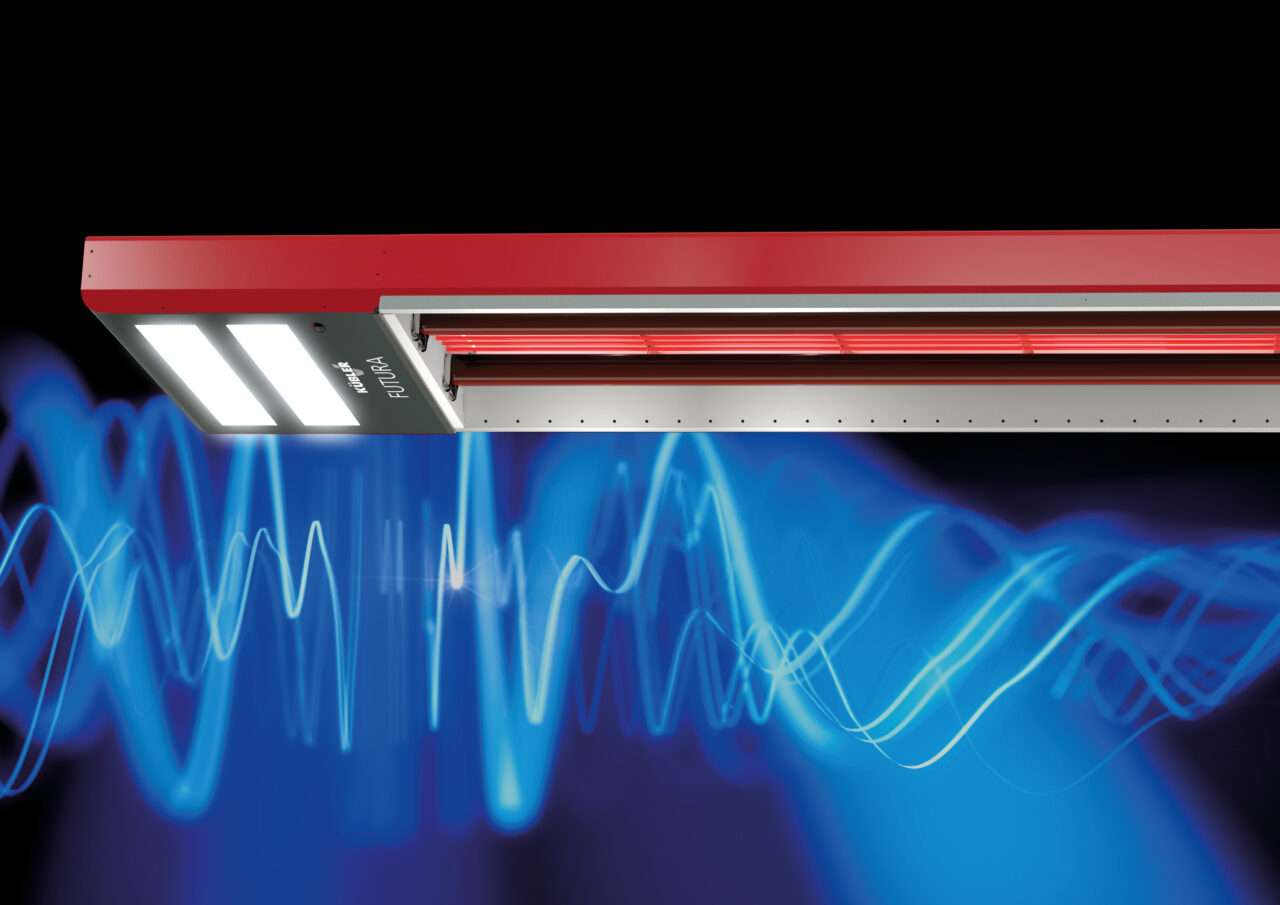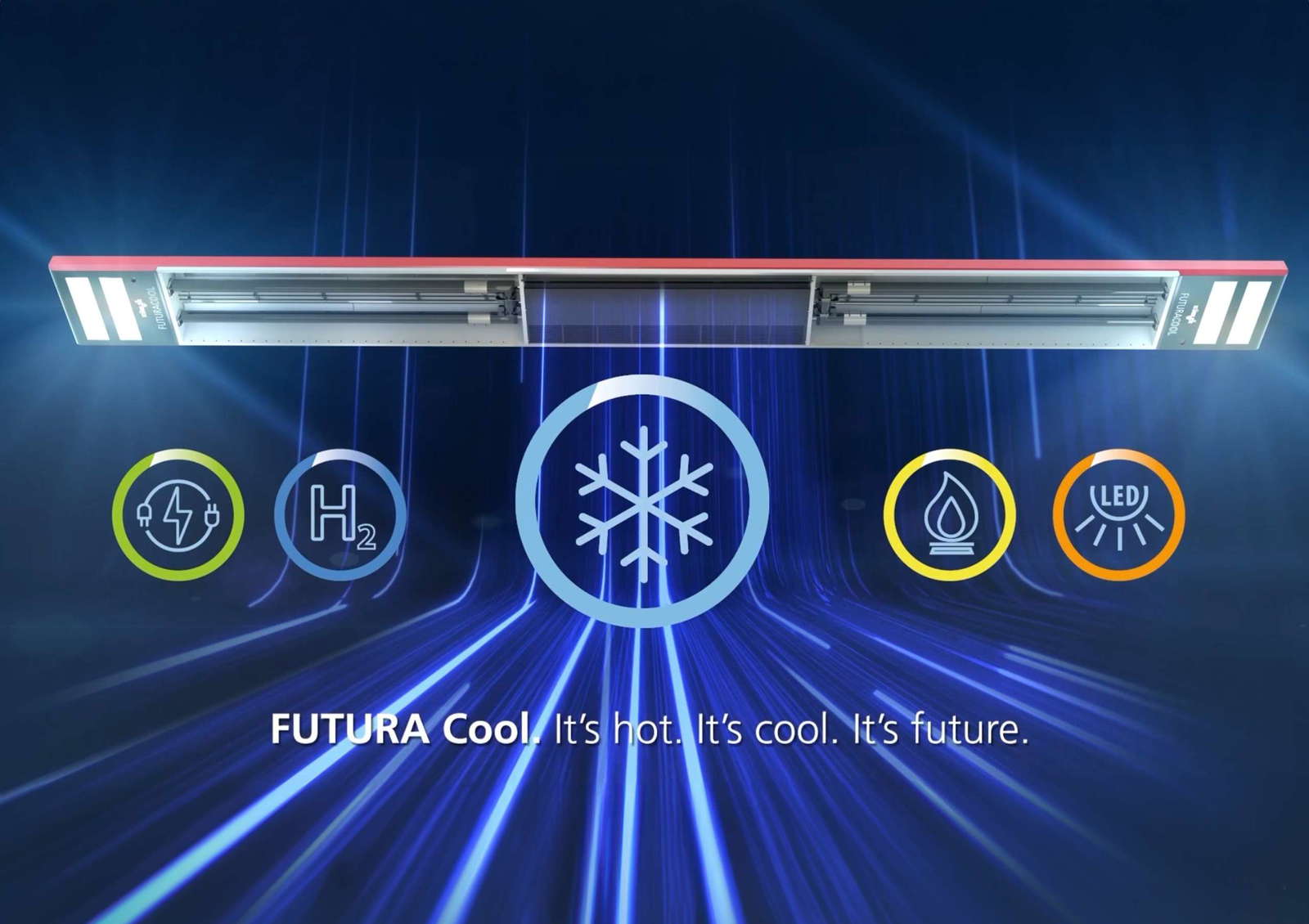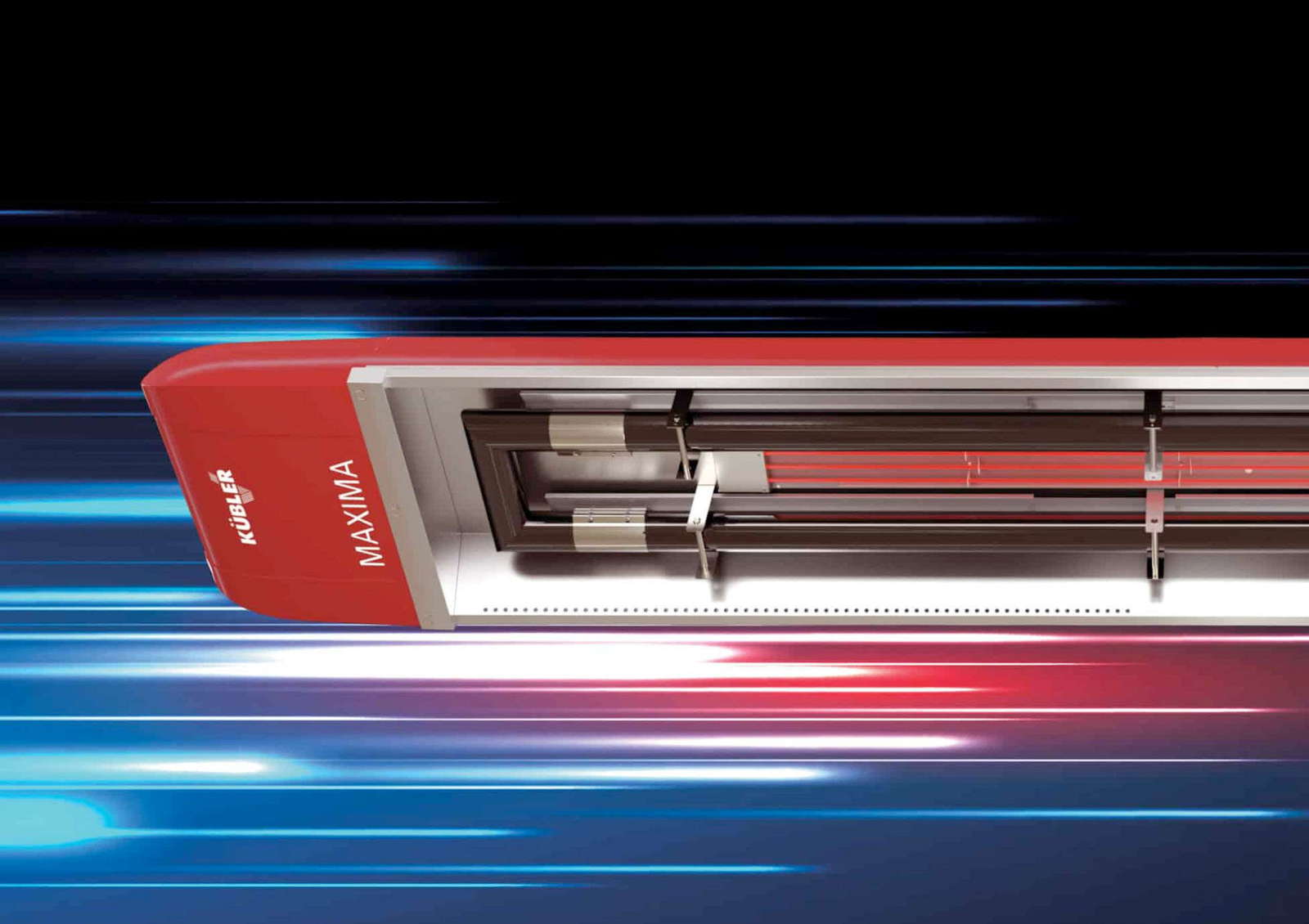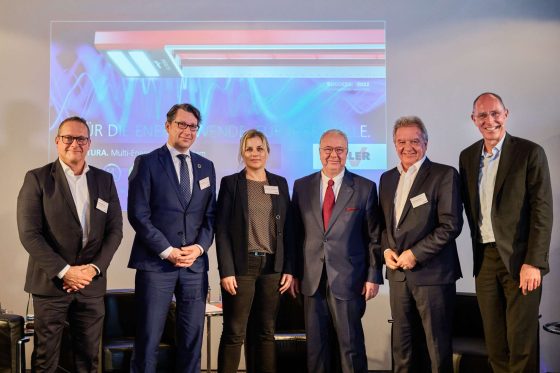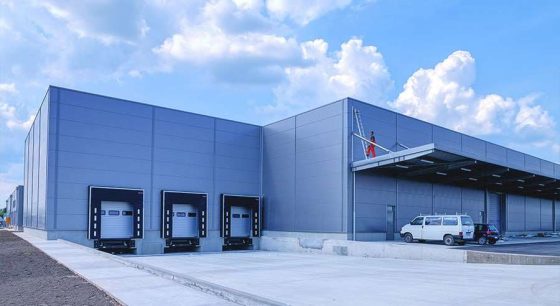Rent infrared hall heating. 4 reasons why this is important for companies right now.
June 7, 2023
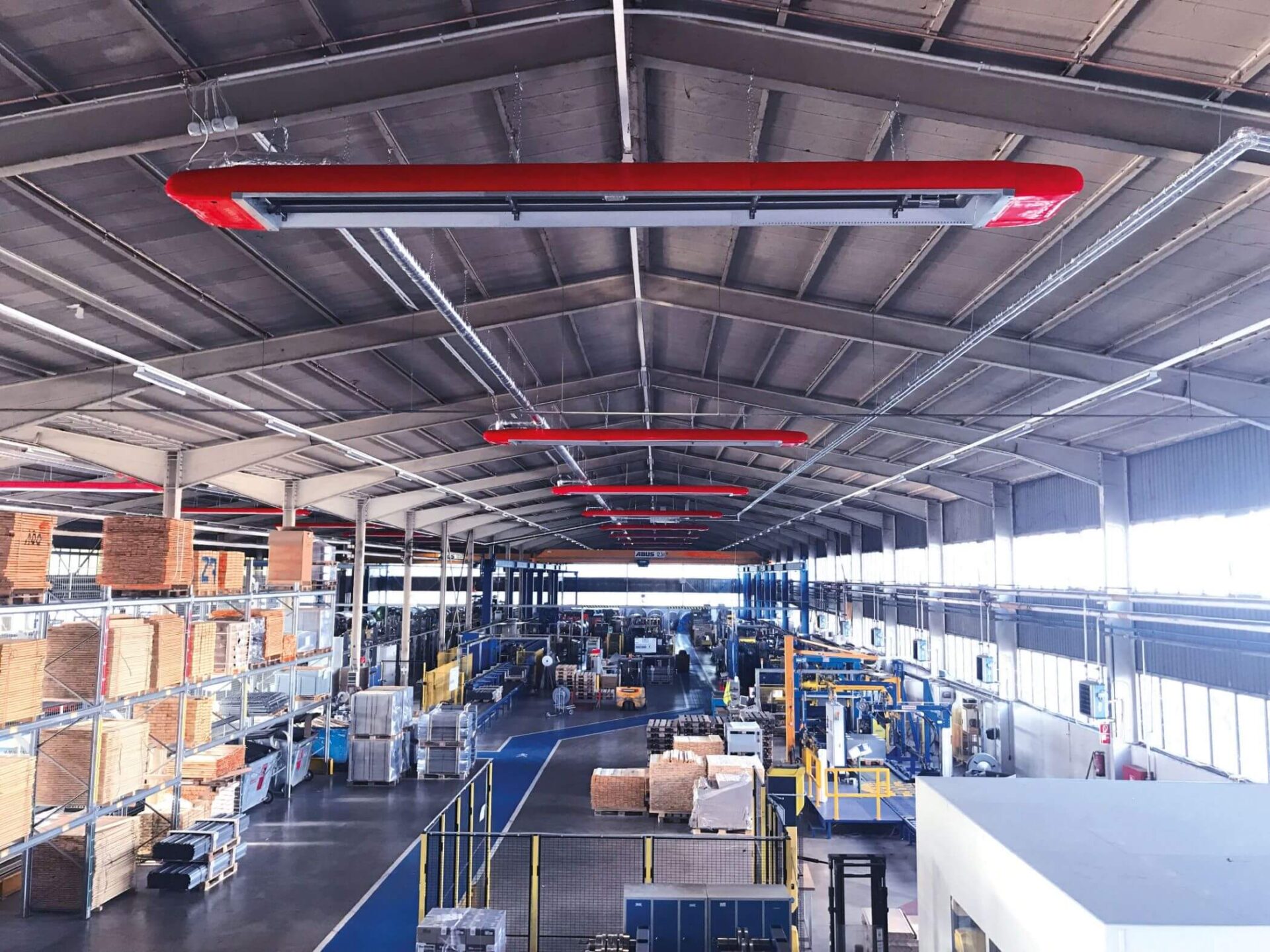
The search for suitable optimization potential in energy-related processes in industrial and commercial companies is not always easy for energy management. Especially as measures in efficiency technologies and renewable energies cost money and the budget is often lacking. Many - ecologically and economically important - measures then fall by the wayside. But does that have to be the case?
When it comes to energy consumption optimization concepts, particular attention is paid to technically outdated hall heating systems. More than half of the 480,000 or so industrial and commercial buildings in Germany use heating systems that are no longer state of the art. They burn up tons of energy every winter and unnecessarily pollute the environment with millions of tons of CO2-emissions.
Despite this, many hall operators are reluctant to invest in the energy-efficient refurbishment of outdated heating technology. Why? The main reason is probably the considerable uncertainty that has spread across the country since the BMWK announced the amendment to the Building Energy Act (GEG) in 2022: Which technologies will still be allowed? Which energy sources will prevail? Another important reason is the concern about supposedly necessary interruptions to production and a lengthy major project. Often, however, the budget is simply lacking. There are several reasons to implement the energy-efficient refurbishment immediately.
1. multi-energy infrared hall heating systems solve the GEG problem. Today and also after 2024.
Anyone who has to take into account the requirements of the GEG not only according to the current version, but also according to the planned amendment (still to be passed in parliament), needs to know this: The 65-% renewable energy rule can be met without sacrificing the high functionality and flexibility of decentralized infrared heaters in halls! Even at a very reasonable price, as IR heating systems only cost around 1/4 of the price of a heat pump, for example. This is made possible by multi-energy-capable, highly efficient infrared heating systems such as FUTURA, which can be operated with electricity, hydrogen, biogas, (biogenic) liquid gas or methane. And this in mixed or mono mode, depending on which energy is available or particularly cheap at the time. This world first was presented at ISH 23 in March and has already won three innovation awards.
2. installation under the hall ceiling maintains the flexibility of work areas and hall floors
Infrared hall heating systems are installed under the hall ceiling to save space. This means that they do not take up any space in the work areas, the hall floor remains free and machine changeovers are still possible. Installation takes place during ongoing operations and is planned by experienced experts in such a way that production operations can continue unchanged.
3. companies and the environment benefit from +/- 70 % less energy consumption
Modernization with modern infrared hall heating systems significantly reduces energy costs. Depending on the project, by up to 70 %. So every day that is spent heating with outdated appliances costs the company a lot of unnecessary money that could certainly be put to better use elsewhere.
4. heat-as-a-service: Rent infrared heating and save money
And the best for last: modern infrared hall heating systems - and the new multi-energy systems too, by the way - do not require a budget for an investment. This is because they can be easily rented according to a smart and very lucrative service concept (KÜBLER HeizWerk). Heat-as-a-service, so to speak. This concept includes all services, from planning to heating operation, to reliably supply your hall operation with heat. With no burden on liquidity and, incidentally, no burden on earnings, because you save not only on investment costs but also on depreciation. And perhaps the most interesting thing: due to the high energy savings (see above), the costs for rent and energy are generally still significantly lower than those of the old system!
Renting has many advantages. Why not benefit right away?
There is a lot to be said for renting an infrared heater - and actually nothing against it. Because renting has many advantages - for your company and for climate targets. You reduce heating costs and emissions immediately from the first hour of operation. You have no outlay for investment, depreciation and operation. And you have the freedom to take the technical path to the energy transition step by step by opting for highly efficient gas-powered infrared hall heating systems - always in compliance with the GEG. Or you can opt for decarbonization right away and use the innovative possibilities of the new multi-energy infrared heating systems. Incidentally - and this is also a new feature - they can also provide the hall lighting in a single device. The decision is entirely up to you. We will be happy to advise you without obligation!
A practical example and lighthouse project on the new dena website
Höganäs Germany is one company that has rented the new infrared heating system and saved around 70 % of energy thanks to the heating refurbishment. A flagship project on dena's new "Good Practice" website. Click here for the project on the dena website: Laufenburg Kübler - Energy Efficiency Award
Everything you need to know about energy-saving hall heating systems in practice
Saving energy is a big issue - across all sectors. If you want to put an end to inefficient heating systems, our guide is just right for you!
Request a free guide
You might also be interested in
-
It is only a small segment, but of great importance: in the current discussion about the energy transition, industrial buildings are being neglected. They only make up two percent of the building stock in Germany. However, they are responsible for around 15 percent of building-related energy consumption and the associated greenhouse gas (GHG) emissions. In the current Building Energy Act (GEG), however, industrial buildings are treated in the same way as daycare centers - and there are indications in a draft bill that the federal government wants to focus exclusively on heat pumps as a technology. KÜBLER GmbH in Ludwigshafen invited experts to discuss this issue. Daniel Föst, construction policy spokesman for the FDP parliamentary group in the Bundestag, announced his intention to change the legislative system.
-
The "Innovative through research" seal is awarded to research-based companies that are committed to a strong innovation location in Germany with their development work. KÜBLER is once again one of these companies and has been awarded the prestigious seal.
-
While Germany is discussing the energy transition, KÜBLER GmbH from Ludwigshafen has already delivered. FUTURA is the name of the latest invention from the experts for hall heating systems - and it works regardless of the energy source: the infrared heating system for halls uses hydrogen, electricity, gas or a mix of these. It can process green and fossil fuels highly efficiently, thus building a bridge to the carbon-free era. This is one of the reasons why the Investitions- und Strukturbank Rheinland-Pfalz (ISB) and the Ministry of Economic Affairs, Transport, Agriculture and Viticulture awarded KÜBLER the special prize "Innovative Technologies for Climate Protection" at the SUCCESS Innovation Award on Tuesday evening.
-
Not only politicians have pulled the ripcord, many companies are also planning to extend the Christmas break and shut down operations at least until the second week of January. Machines will be at a standstill for weeks and the doors to the factory buildings will remain closed.
